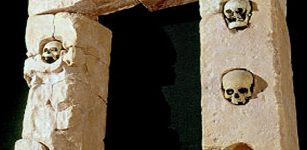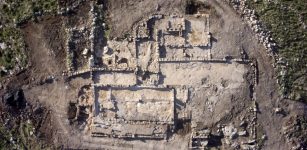4,500-Year-Old Lost ‘Sun Temple’ Dedicated To God Ra Unearthed In Abu Gorab Necropolis
Conny Waters - AncientPages.com - A joint Polish- Italian archaeological mission excavating at the temple of King Nyuserre in the Abu Gorab necropolis north of Abusir made an important discovery.
Archaeologists believe they have probably found the remains of a milk-brick building below the temple, which preliminary studies suggest may be one of the four lost sun temples dated to the Old Kingdom’s fifth dynasty, according to Egypt’s Antiquities Ministry.
Credit: Supreme Council of Antiquities
The fifth dynasty of ancient Egypt ruled from 2465-2323 BC, which means the structure could be one of the oldest ones built in the area. According to the Antiquities Ministry’s statement, the remains of the lost temple were found buried beneath a newer temple built during the rule of King Nyuserre.
Nyuserre reigned as the sixth pharaoh of the fifth dynasty. He built six pyramids during his reign: three for himself and his queens and three for his father, mother, and brother, all in Giza’s Abusir necropolis.
Additionally, he also constructed the largest surviving temple to the sun god Ra built during the Old Kingdom, as well as the Nekhenre, another Sun temple built to honor Userkaf, another fifth dynasty pharaoh, and the valley temple of Menkaure in Giza.
Credit: Supreme Council of Antiquities
As for the sun temple, Dr. Ayman Ashmawy, a prominent archaeologist who heads the Egyptology department of the country’s Supreme Council of Antiquities, said in a statement that all signs point to Nyuserre having removed parts of the lost temple while constructing his prominent sun temple.
Many pottery fragments were also found at the site between the newer temple’s foundation and the remains of the buried temple. It has been interpreted as part of a foundation ritual where builders laid down ceramics before they began their work as a way to consecrate the site.
Credit: Supreme Council of Antiquities
Credit: Supreme Council of Antiquities
Archaeologists also discovered the ceramics that included various kinds of vessels like the ones for drinking beer, serving food, and others that had red-painted edges, the significance of which was unknown, informed the ministry’s statement.
Among other finds are fragments from clay seals bearing the name of King Shepseskare, considered a valuable discovery, according to Rosanna Birley, head of the Italian part of the mission.
No doubt, the mission should continue to find more archaeological items that can shed light on the fifth dynasty ruler’s life and reign.
Written by Conny Waters - AncientPages.com Staff Writer
























